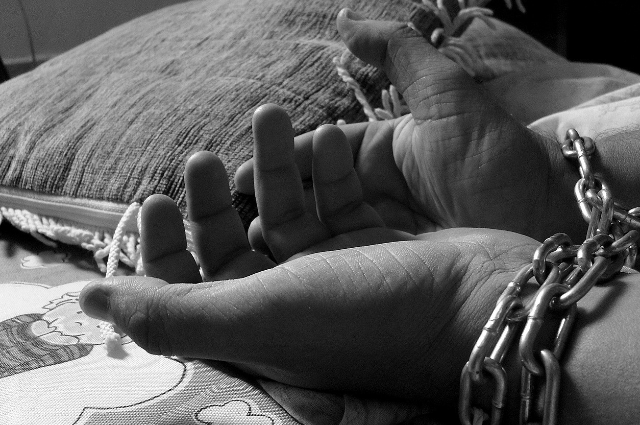
Image by Sammis Reachers from Pixabay
Introduction:
In the heart of India's vibrant and diverse social fabric, a narrative often overlooked and overshadowed by the clamor of everyday life unfolds within the confines of its prisons. It's a story of resilience, injustice, and the indomitable spirit of women who find themselves behind bars, often battling a double-edged sword of gender bias and societal indifference. In a country celebrated for its cultural richness and democratic values, the plight of women in prison remains a seldom-discussed, yet profoundly pressing issue. The journey into the world of incarcerated women in India is a complex odyssey that traverses the intersections of gender, class, caste, and the harsh realities of a flawed criminal justice system. As we embark on this exploration, we are confronted with a stark truth – that the circumstances leading to women's imprisonment, their experiences within the penal system, and the challenges they encounter upon release are deeply entwined with the larger tapestry of gender dynamics in India. While India has made significant strides in various arenas, the gendered nature of crime, punishment, and rehabilitation remains a subject that demands our attention and scrutiny. Women in prison represent an overlooked and marginalized section of society, often subject to systemic injustices that compound the difficulties they face both inside and outside the prison walls.
This comprehensive article seeks to shed light on the multifaceted experiences of women in prison across India. It aims to unravel the complex web of factors that lead to their incarceration, dissect the conditions of their confinement, and critically examine the various issues that plague their reintegration into society upon release. From the pervasive influence of gender bias within the criminal justice system to the unique challenges faced by women from different social backgrounds, we will embark on a journey that seeks not only to understand but also to advocate for meaningful change. Through interviews with former inmates, conversations with advocates and experts, and a deep dive into the legal and policy landscape, this article aspires to provide a nuanced and empathetic perspective on the lives of women in prison in India. It is a call to action, an invitation to engage with a subject often relegated to the shadows, and a plea for a more just and equitable society where the rights and dignity of all, regardless of gender, are upheld and respected.
Evolution of women's prisons and their initial purposes;
The evolution of women's prisons in India has followed a trajectory closely tied to societal norms, colonial influences, and legal reforms. Historically, women's involvement in criminal activities was limited due to societal constraints. Consequently, there was little need for separate women's prisons, with female offenders often handled informally or, in serious cases, placed alongside male prisoners. However, during the British colonial period, a formalized prison system was introduced, leading to the establishment of separate women's prisons characterized by poor conditions and a punitive approach.
Following India's independence in 1947, there emerged a growing recognition of the need to reform the criminal justice system, including the treatment of women in prison. This shift marked a transition from a punitive stance to one focused on rehabilitation. It acknowledged that many women inmates were themselves victims of abuse and exploitation. Consequently, the modern women's prison system in India has sought to rehabilitate and reform female offenders through education, vocational training, and counseling. It also prioritizes the protection of female inmates, addressing the prevalent issue of gender-based violence in both society and within prison walls. In addition to rehabilitation and protection, women's prisons in India have adapted to meet the unique needs of incarcerated mothers. Some have established mother-child units, enabling mothers to live with their young children in a nurturing environment during the crucial early years. Legal reforms have also been implemented to safeguard the rights of women prisoners, expediting trials, preventing custodial abuse, and ensuring access to healthcare. Special provisions have been introduced for female juvenile offenders, emphasizing rehabilitation and reintegration into society. Overall, the transformation of women's prisons in India reflects a shift toward a more humane and rehabilitative approach, empowering women to lead productive lives upon release.
Current statistics on women in prison in India:
As of 2023, there are over 33,000 women incarcerated in India, accounting for 4.2% of the total prison population. The majority of women in prison are incarcerated for non-violent offenses, such as petty theft, drug offenses, and prostitution. The number of women in prison has been increasing in recent years, due to a number of factors, including: The criminalization of poverty and homelessness, the war on drugs and the lack of access to due process and legal representation for women
The criminalization of poverty and homelessness is a major factor in the increasing number of women in prison in India. Women who are poor and homeless are more likely to be arrested for petty crimes, such as begging or loitering. They are also more likely to be denied bail, which means they have to stay in jail until their trial. The war on drugs has also contributed to the increase in the number of women in prison. Women who are arrested for drug offenses are often incarcerated for longer sentences than men. They are also more likely to be put in solitary confinement. The lack of access to due process and legal representation for women is another major challenge. Women who are arrested often do not have the resources to hire a lawyer, and they may not be aware of their rights. This can lead to them being wrongfully convicted or sentenced to longer sentences.
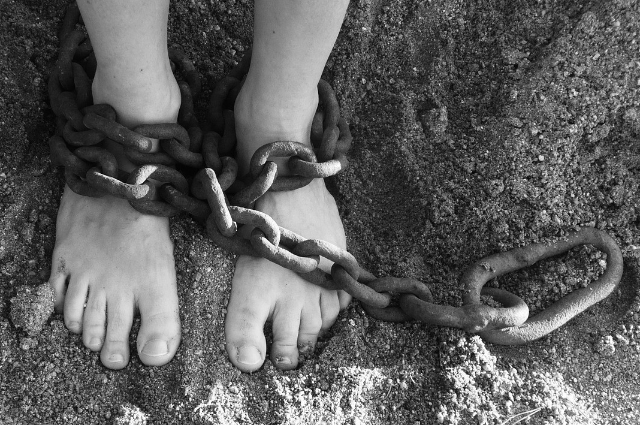
Image by PublicDomainPictures from Pixabay
Factors contributing to the growth in the female prison population:
The growth in the female prison population can be attributed to a complex interplay of several factors. Firstly, changes in criminal justice policies and sentencing practices have led to longer sentences and increased rates of incarceration for both men and women. This includes mandatory minimum sentences and three-strike laws that disproportionately affect women, particularly those involved in non-violent offenses. Secondly, socioeconomic factors play a crucial role. Many women in the criminal justice system come from disadvantaged backgrounds with limited access to education and economic opportunities. Poverty, lack of affordable housing, and limited access to mental health services contribute to a higher likelihood of involvement in criminal activities, increasing the female prison population. Thirdly, the War on Drugs has had a significant impact. Women have been caught up in the punitive measures aimed at drug offenders, resulting in a substantial increase in the number of women behind bars. Mandatory drug sentencing laws and the criminalization of addiction have fueled this trend.
Moreover, the intersection of gender and race cannot be overlooked. Women of color, especially Black and Hispanic women, are disproportionately represented in the female prison population due to racial disparities in arrests, sentencing, and access to legal representation. Another contributing factor is the criminalization of survival strategies such as sex work and substance abuse, which disproportionately affects marginalized women. These women often end up in the criminal justice system rather than receiving the support and resources they need to address underlying issues.
Finally, there has been a shift in public perception and awareness of issues related to women in the criminal justice system. Increased advocacy and research have shed light on the unique challenges faced by incarcerated women, leading to a growing acknowledgment of the need for reform in policies and practices related to female offenders. the growth in the female prison population is the result of a complex web of factors, including changes in sentencing policies, socioeconomic disparities, the War on Drugs, racial inequalities, the criminalization of survival strategies, and increased awareness of women's issues in the criminal justice system. Addressing this issue requires a multifaceted approach that includes policy reform, support for at-risk populations, and efforts to reduce the over-criminalization of women.
Unique needs and challenges faced by women in prison:
Indian women in prison face unique needs and challenges that require specific attention and support. These challenges are often shaped by cultural, social, and legal factors. Here are some of the key issues:
- Social Stigma and Family Rejection: In Indian society, there is a significant stigma associated with women who have been incarcerated. This stigma can lead to family rejection, making it difficult for women to reintegrate into their communities after release.
- Overrepresentation of Marginalized Groups: Like in many countries, Indian prisons see a disproportionate representation of marginalized groups among incarcerated women, including lower-caste women, tribal women, and women from economically disadvantaged backgrounds.
- Lack of Gender-Sensitive Facilities: Many Indian prisons lack gender-sensitive facilities and resources. This includes a shortage of separate facilities for women, limited access to female healthcare providers, and inadequate sanitation and hygiene.
- Maternal and Child Health: A significant number of women in Indian prisons are mothers, and some have young children living with them in prison. Ensuring the health and well-being of these children, as well as addressing the needs of pregnant women, is a unique challenge.
- Legal Assistance and Representation: Many incarcerated women in India may not have access to legal representation, leading to miscarriages of justice. Ensuring legal aid and representation is crucial to protect their rights.
- Mental Health and Trauma: Like incarcerated women elsewhere, Indian women prisoners often have high rates of trauma and mental health issues. Access to mental health services and trauma-informed care is vital.
- Rehabilitation and Reintegration: Preparing incarcerated women for life after prison is essential. This includes providing them with education, vocational training, and support in finding employment upon release.
- Access to Education: Many women in prison have limited educational opportunities. Providing access to basic education and skill-building programs can help them prepare for a better future.
- Cultural and Religious Needs: Addressing the cultural and religious needs of incarcerated women is important for respecting their identity and beliefs.
- Legal Reforms: Policymakers should consider legal reforms that take into account the specific circumstances and needs of women in the criminal justice system. This includes reviewing sentencing policies and alternatives to imprisonment.
Incarcerated mothers and the impact on their children:
The incarceration of Indian mothers has a profound and multifaceted impact on their children, creating a cycle of vulnerability and disadvantage. Firstly, separation from their mothers during crucial developmental stages can have long-lasting emotional and psychological effects on children. These separations can lead to feelings of abandonment, anxiety, and depression, impacting their overall well-being. Secondly, the practical needs of these children are often neglected. In many cases, they may end up in inadequate care arrangements, such as with extended family members or in overcrowded and under-resourced childcare institutions. This can result in inadequate nutrition, healthcare, and educational opportunities, further hindering their development. Thirdly, the social stigma associated with having an incarcerated mother can be particularly challenging for children in India. They may face discrimination, bullying leading to a sense of isolation and low self-esteem. Moreover, the economic stability of the family is often compromised when a mother is incarcerated. This can push the family into poverty, making it even harder for children to access essential resources and opportunities.
Additionally, children of incarcerated mothers are at a higher risk of becoming entangled in the criminal justice system themselves. The absence of a positive maternal influence and exposure to the criminal environment can increase their susceptibility to delinquency and crime. Lastly, there is a need for policy reforms and support systems to address these issues. Implementing measures such as providing counseling and support services for affected children, improving conditions for mothers and children within correctional facilities, and exploring alternatives to incarceration for non-violent offenders can help mitigate the negative impacts on both incarcerated mothers and their children. Recognizing the importance of maintaining family bonds and providing a nurturing environment for children with incarcerated mothers is crucial for breaking the cycle of intergenerational disadvantage and promoting healthier outcomes for these vulnerable children.
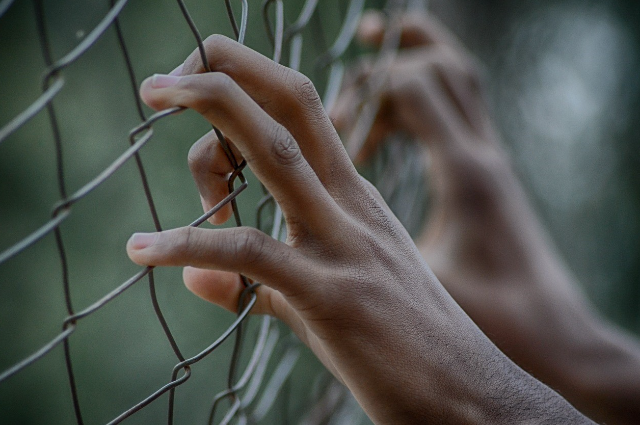
Image by Fifaliana Joy from Pixabay
Existing Indian laws and policies related to women in prison:
In India, several laws and policies are in place to address the specific needs and rights of women in prison. Here are some of the key legal provisions and policies related to women in the Indian penal system:
- The Prison Act, 1894: This is the overarching law governing the administration of prisons in India. While it doesn't specifically focus on women, it provides the basic framework for the operation of prisons, including provisions for the separation of male and female prisoners.
- Model Prison Manual, 2016: The Model Prison Manual provides guidelines for the management of prisons, including standards for the care, protection, and rights of women prisoners. It addresses issues such as healthcare, hygiene, and access to legal aid.
- The Women's Prison Rules, 1956: These rules provide detailed provisions for the management of women's prisons, including the separation of women prisoners from men, female staff, and facilities for children who may accompany their incarcerated mothers.
- The National Commission for Women (NCW): Although not specific to prisons, the NCW plays a crucial role in protecting and promoting the rights of women across various sectors, including the correctional system. It can intervene in cases of reported violations of women's rights in prisons.
- Legal Aid and Support Services: Women prisoners have the right to legal aid and representation. Legal Services Authorities Act, 1987, ensures access to legal aid services, and legal aid clinics are often set up within prisons to facilitate this.
- Rehabilitation and Skill Development Programs: Various state governments and non-governmental organizations (NGOs) run rehabilitation and skill development programs aimed at empowering incarcerated women with education and vocational skills to help them reintegrate into society upon release.
- Children Accompanying Incarcerated Mothers: Special provisions are made for children who live with their incarcerated mothers. They are often housed in creche facilities within the prison and provided with education and healthcare.
- Reforms in Sentencing: There is an increasing recognition of the need for alternative sentencing options for non-violent female offenders, such as community service, probation, or parole, to prevent unnecessary separation from their families.
- Gender Sensitization Training: Prison staff often receive gender sensitization training to ensure they treat women prisoners with dignity and respect and are aware of the specific needs and vulnerabilities of female inmates.
Issues of safety and violence within women's prisons:
Safety and violence within women's prisons in India remain significant concerns, raising serious human rights issues. Firstly, overcrowding is a prevalent problem, leading to cramped conditions and tension among inmates. Overcrowding can exacerbate the risk of violence, as it becomes more challenging for authorities to maintain order and protect prisoners from harm. Secondly, instances of physical and sexual violence occur within women's prisons. This violence can be perpetrated by both inmates and prison staff. The power dynamics within prisons can contribute to such incidents, with vulnerable inmates, especially those with mental health issues, being at greater risk. These instances often go unreported due to fear of retaliation or lack of trust in the system. Thirdly, inadequate healthcare and mental health services in women's prisons contribute to safety issues. Many incarcerated women have specific healthcare needs, including prenatal and postnatal care, which may not be adequately addressed.
Mental health services are often insufficient, leaving inmates without access to treatment and support for trauma and psychological issues. Fourthly, there are concerns about the abuse of disciplinary measures. Punishments such as solitary confinement can have severe psychological effects and are sometimes used excessively. Ensuring that disciplinary actions are in line with human rights standards is essential to prevent abuse. Furthermore, access to legal representation and recourse for complaints is often limited for female inmates. This can leave them without effective means to report violence or seek justice for violations of their rights. Addressing these issues requires a comprehensive approach, including improving prison infrastructure, providing adequate healthcare and mental health services, training prison staff in gender sensitivity and conflict resolution, and establishing effective mechanisms for reporting and addressing violence within prisons. Ensuring that the rights and safety of incarcerated women are protected is not only a matter of justice but also a reflection of a society's commitment to humane treatment and rehabilitation within the penal system.
Challenges faced by women upon reentry into society:
Indian women face several significant challenges upon reentry into society after being incarcerated. These challenges can make the process of reintegration difficult and often lead to recidivism. Some of the key challenges include:
- Social Stigma: Formerly incarcerated women often face intense social stigma and discrimination. This stigma can hinder their ability to find employment, housing, and establish positive social relationships. Families and communities may shun them, exacerbating their isolation.
- Limited Employment Opportunities: Finding stable employment is a major challenge for formerly incarcerated women. Many employers are hesitant to hire individuals with a criminal record, limiting their access to financial independence and stability.
- Lack of Education and Skills: A significant portion of incarcerated women in India have limited education and job skills. Without access to education and vocational training during their time in prison, they may lack the qualifications needed for gainful employment.
- Mental Health and Trauma: Many women in prison have experienced trauma and mental health issues. The lack of access to mental health services both during incarceration and upon reentry can hinder their ability to cope with the challenges of reintegration.
- Family Rejection: Reestablishing relationships with family members can be difficult, especially if the family had disowned or distanced themselves during the woman's incarceration. Family rejection can lead to homelessness and a lack of emotional support.
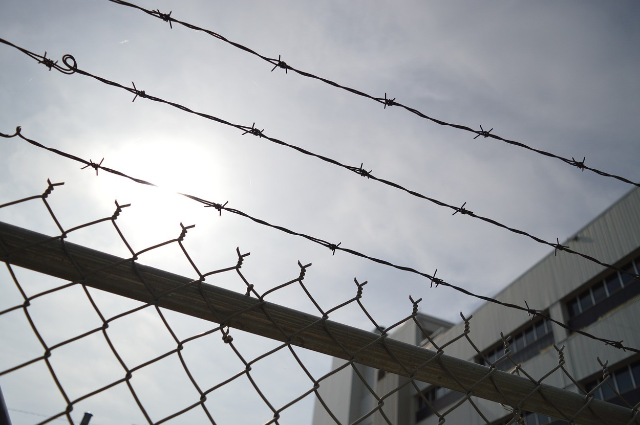
Image by ErikaWittlieb from Pixabay
- Economic Instability: Many formerly incarcerated women struggle with financial instability. They may face difficulties accessing government benefits and support services, leaving them economically vulnerable.
- Legal Barriers: Legal restrictions and ongoing obligations, such as parole or probation, can pose challenges. These women may have to navigate complex legal requirements, which can be especially difficult if they lack legal assistance.
- Child Custody and Parenting Challenges: For women who are mothers, regaining custody of their children can be a complicated process. Child welfare authorities may require evidence of a stable and safe living environment, which can be challenging to provide.
Successful Indian initiatives and legislative reforms related to women in prison:
India has made efforts to address the unique needs and challenges of women in prison through various initiatives and legislative reforms. Some of the successful initiatives and reforms related to women in Indian prisons include:
- Setting Up of Special Prisons: Several states in India have established special prisons exclusively for women. These prisons are designed to provide a safer and more gender-sensitive environment for female inmates, with facilities for women's hygiene and healthcare.
- Mother-Child Units: Some Indian prisons have introduced mother-child units, where incarcerated mothers can live with their young children. These units aim to provide a more nurturing environment for children while allowing mothers to maintain their maternal bonds.
- Legal Aid Clinics: Legal aid clinics within prisons offer incarcerated women access to legal services, ensuring that their rights are protected and that they have a fair chance at justice.
- Vocational Training and Skill Development: Many prisons in India offer vocational training and skill development programs tailored to the needs of female inmates. These programs empower women with valuable skills that enhance their employability upon release.
- Mental Health Services: Recognizing the mental health challenges faced by incarcerated women, some prisons provide access to mental health services and counseling to address trauma and other psychological issues.
- Legal Reforms: Some states have initiated legal reforms to reduce the imprisonment of women for non-violent offenses. This includes considering alternatives to incarceration, such as community service or probation, for certain female offenders.
- Gender Sensitization Programs: Gender sensitization programs for prison staff have been implemented to ensure that female inmates are treated with dignity and respect and that staff members are aware of the specific needs and vulnerabilities of women in prison.
- Advocacy and Awareness Campaigns: Non-governmental organizations (NGOs) and women's rights groups in India have played a vital role in advocating for the rights of women in prison. They raise awareness about the issues faced by incarcerated women and work to improve their conditions.
- Training for Legal Professionals: Training programs for lawyers and legal professionals on gender-sensitive approaches to handling cases involving women in conflict with the law have been organized to ensure fair and just legal proceedings.
- The Justice Verma Committee Report: While not specific to women in prison, the Justice Verma Committee's recommendations, following the Nirbhaya case, have led to significant legal reforms and increased attention to women's safety and rights, which indirectly benefit women within the criminal justice system.
Ongoing challenges and areas for future reform:
Despite progress, several ongoing challenges persist within the Indian penal system regarding women in prison, highlighting the need for future reforms.
- Overcrowding and Infrastructure: Overcrowding remains a significant issue, leading to poor living conditions and increased tensions among inmates. Expanding prison infrastructure to accommodate the growing number of incarcerated women is crucial for their safety and well-being.
- Access to Legal Representation: Many women in prison still lack access to legal aid and representation. Ensuring that legal services are readily available can help protect their rights and prevent miscarriages of justice.
- Mental Health and Trauma Support: Addressing the mental health needs of incarcerated women, particularly those who have experienced trauma, requires greater attention. Expanding mental health services within prisons and providing trauma-informed care is essential.
- Vocational Training and Employment: While vocational training programs exist, more emphasis is needed on connecting incarcerated women with employment opportunities upon release. This can help break the cycle of reoffending by providing financial stability.
- Child Welfare and Custody Arrangements: Ensuring that children living with incarcerated mothers receive proper care, education, and support is vital. Clear policies and guidelines regarding custody arrangements and child welfare within prisons are needed.
- Rehabilitation and Reintegration: Comprehensive post-release support services, including housing, employment assistance, and counseling, are essential to facilitate the successful reintegration of women into society. These services should be tailored to the specific needs of female ex-offenders.
- Legal Reforms: Revisiting and amending laws related to non-violent offenses can reduce the imprisonment of women for minor infractions and promote alternatives to incarceration.
- Monitoring and Oversight: Strengthening mechanisms for independent oversight and monitoring of prison conditions and the treatment of female inmates can help prevent human rights violations.
- Awareness and Advocacy: Raising public awareness about the issues faced by women in prison and advocating for their rights remains critical. Civil society organizations and advocacy groups can play a pivotal role in driving reform efforts.
While India has taken steps to address the challenges faced by women in prison, ongoing reforms are necessary to ensure their rights and well-being are protected. These reforms should focus on improving infrastructure, legal representation, mental health support, vocational training, and post-release services while continuing to promote awareness and advocacy for the unique needs of incarcerated women.
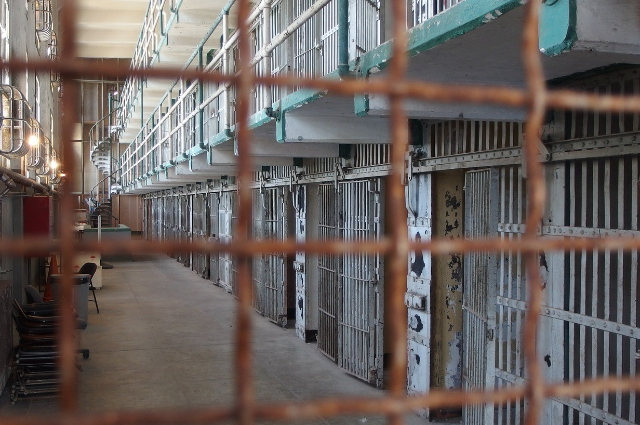
Image by Marcello Rabozzi from Pixabay
Conclusion:
The journey of women through the criminal justice system in India reveals a complex web of challenges, from incarceration to reintegration into society. The key takeaways from this exploration include the pressing need for gender-sensitive reforms within the penal system, addressing issues like overcrowding, mental health support, and access to legal representation. It underscores the critical importance of nurturing rehabilitation programs tailored to the unique needs of incarcerated women and their children. But our role as responsible citizens does not end with understanding these issues. It begins with acknowledging that the rights and dignity of women in prison are integral to the principles of justice and human rights we hold dear. It's about recognizing that these women, too, deserve a chance at redemption, growth, and a life free from violence and discrimination. So, let us all be catalysts for change. Whether it's through supporting organizations dedicated to women's rights in the criminal justice system, advocating for policy reforms that emphasize rehabilitation over punitive measures, or engaging in community efforts to provide a helping hand to those seeking reintegration, we can all contribute to a more equitable and just society. The journey of incarcerated women is not theirs alone; it's a shared path, and together, we can pave the way for brighter futures, break the cycle of recidivism, and ensure that no woman's potential is left untapped within the confines of a prison cell.
. . .
References:
- "Women in Indian Prisons: Inmates’ Perspectives" by Paramjit S. Judge in the Journal of Indian Law & Society, 2015.
- "In Search of Justice for Women in the Criminal Justice System of India" by Shalu Nigam in the South Asian Journal of Criminology and Criminal Justice, 2017.
- "Female Prisoners in India: An Analysis" by Ravi Nair and Ratna Mangal in the Indian Journal of Psychiatry, 2007.
- "Violence against Women in Indian Prisons" by Madhumita Das in the Journal of Criminal Psychology, 2012.
- "Rehabilitation of Women Prisoners: An Indian Perspective" by Richa Misri in the International Journal of Criminal Justice Sciences, 2011.
